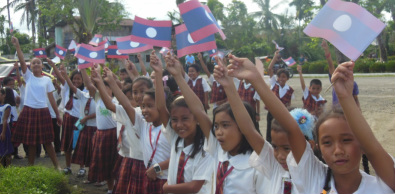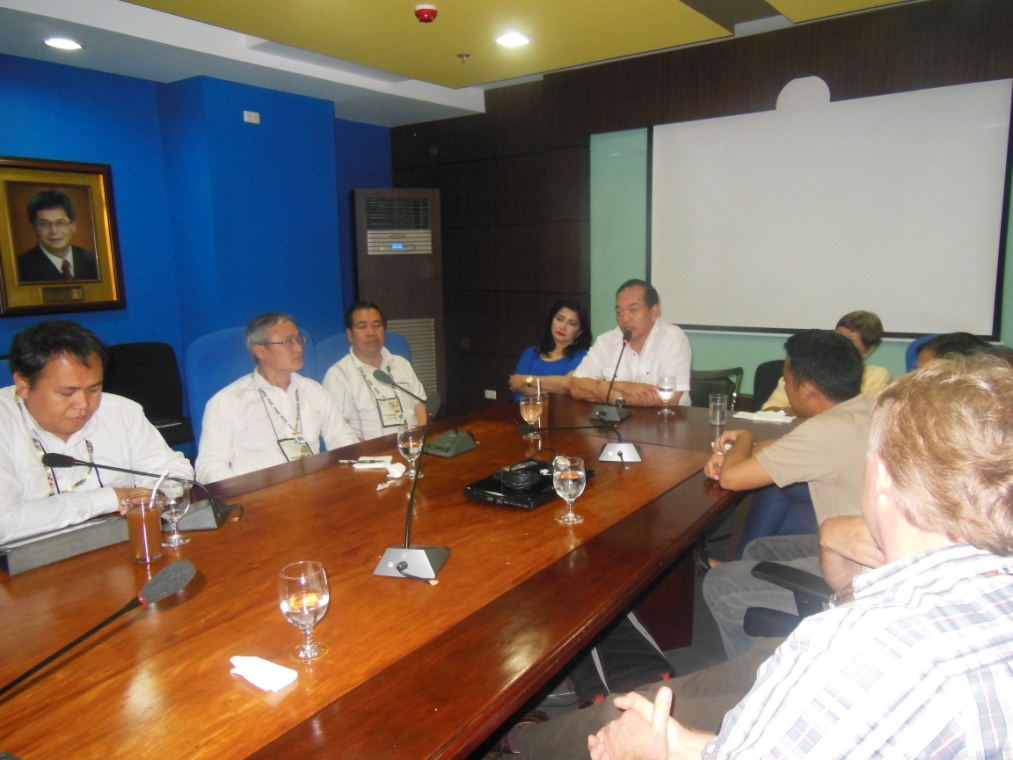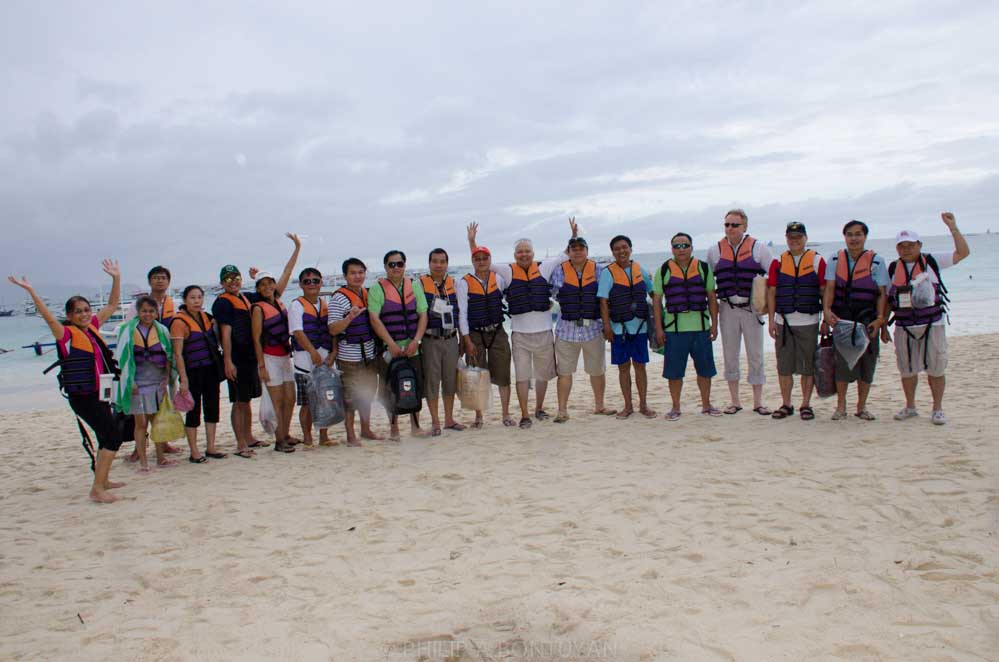Laos government officials learn from Philippine experiences15 December 2013
Seventeen officials from the Lao PDR, including one Filipino (program coordinator) from the GIZ Laos Office, visited the Philippines on 2-11 December 2013 to learn about the country’s local economic development (LED) and poverty reduction practices and policies through the “Second Structured Learning Visit (SLV2) of Lao PDR Government Partners to the Philippines” or SLV2. The program is part of GIZ Laos’ Integrated Rural Development in Poverty Regions of Laos (NU-IRDP) and in support to Lao PDR’s SamSang policy. GIZ Laos organized and coordinated such program in collaboration with the Center for Local and Regional Governance (CLRG). With the aim of deepening and broadening of Lao PDR government officials’ understanding of decentralization, as well as improving their capacity in poverty reduction and LED, SLV2 showcased concepts, experiences and practices in select local government units (LGUs) in the Philippines. A total of eight (8) LGUs have been visited in this learning activity. These LGUs are as follows: Province of Iloilo and three of its municipalities, namely Miagao, Pototan and San Enrique; Province of Aklan and its municipality of Numancia; Province of Laguna; and the City of Mandaluyong in Metro Manila. SLV2 provided the opportunities to observe Philippine local governments across tiers (province, city and municipality) in addition to going at the community level (indigenous peoples called “Aeta” and the mountainous areas). It has also offered experiences with localities which can be considered as rural (San Enrique, Iloilo; Numancia, Aklan), newly emerging urban (Pototan and Miagao in Iloilo), and urban (City of Mandaluyong and Province of Laguna). With the various learning sites visited and activities undertaken, SLV2 was a successful avenue for knowledge transfer and sharing between the Philippines and the Lao PDR. The program highlighted the following: 1) LED may come in different forms (such as agriculture, tourism, cultural and heritage development, etc.); 2) LED may be operationalized through different strategies like public-private partnership, interlocal cooperation, and convergence approaches; 3) local government readiness and competitiveness are important indicators of success of LED; and 4) it is important for LED’s effects to trickle down to the poorest of the community and not just to the middle and upper class members of the population towards genuine development. See other CLRG News. |
More photos
|
- Home
- Who We Are
- In House Experts
-
Programs
- Executive Education >
- Local Legislative Program >
- Customized Training >
- Specialized Courses
- Professional Development Program
- Youth in Local Governance Program >
-
Webinars
>
- Ugnayan Webinar Series
- Rising to the Challenge Series
- Policy Issues Forum
- Youth and Risky Behaviors
- Combating an Invisible Enemy Live
- Rebooting the Local Economy Live
- LGU Management of Pandemic Live
- Effective Risk Communication Live
- Women Children and Crisis Live
- SKDM4 Livestream
- Preparing and Financing LGU COVID19 Recovery Plans Livestrea
- Program Calendar
- 2024 Course Registration
-
Research
- Ongoing Research Projects
-
Publications
>
- Local Matters Book of Readings >
- LG Book of Readings IV
- The Future of Local Autonomy
- Devolved Agricultural Extension Services in the Philippines
- Decentralization and Good Urban Governance
- Innovations and Excellence
- Book of Readings 1
- Book of Readings 2
- Book of Readings 3
- Handbook of Local Fiscal Administration in the Philippines
- Handbook of Modern Management in Philippine Local Government
- Federalism and Multiculturalism
- Decentralization and Power Shift Vol I
- Decentralization and Power Shift Vol II
- Fifteen Years of Decentralization in the Philippines
- Decentralization, Autonomy and the Local Government Code
- Good Urban Governance in the Philippines: Status and Best Practices
- Developing Community Capacities for Pro-Poor Budgeting and Local Government Accountability for Poverty Reduction Book
- Policy Briefs and Reviews >
- Consulting
- Partners
-
Latest CLRG News
-
Local Government Stories
>
-
LocalGov Stories
>
-
LG Stories Archives
>
- July 2016 Stories
- April 2016 Stories
- March 2016 Stories
- February 2016 Stories
- January 2016 Stories
- December 2015 Stories
- January 2015 Stories
- May 2014 Stories
- April 2014 Stories
- March 2014 Stories
- February 2014 Stories
- January 2014 Stories
- May 2013 Stories
- June 2013 Stories
- July 2013 Stories
- August 2013 Stories
-
LG Stories Archives
>
-
LocalGov Stories
>
-
Local Government Stories
>
- Citizen's Charter



